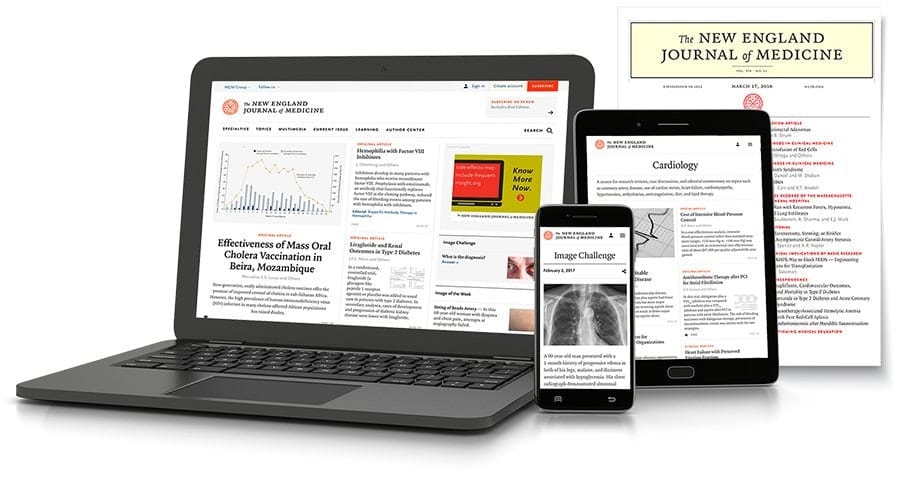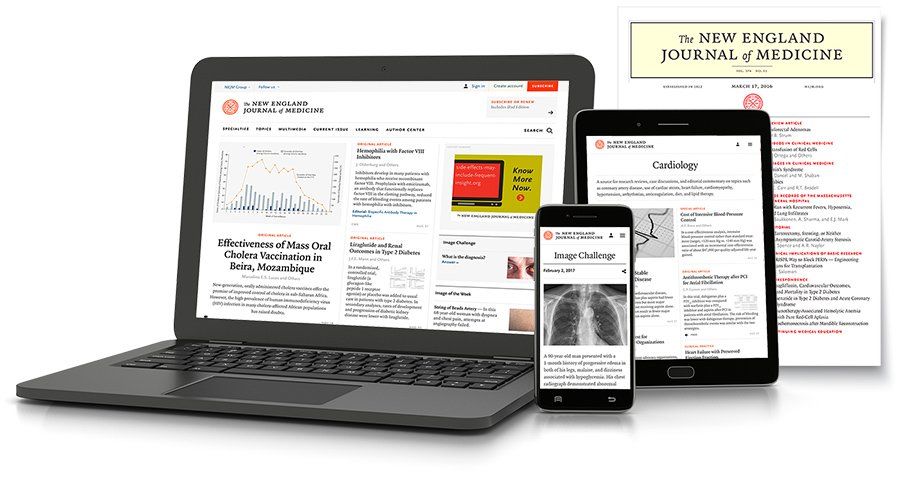Interview: Edward Campion, MD
After 32 years, one of the first digital editors reflects on changes in publishing

I first met Edward (Tad) Campion, MD, in the early 2000s, after I began working at the New England Journal of Medicine (NEJM) as Publishing Director. Low-key and circumspect, Campion was consistently thoughtful and considerate, yet also persistently visionary about moving the digital experience of NEJM forward.
Starting as a Deputy Editor, he was soon informally tasked with moving the online journal forward. When we first met, NEJM was hosted locally, and was just moving to its first commercial platform, HighWire Press. He subsequently became Senior Deputy Editor as the editorial structure of NEJM deepened and expanded, and finally Executive Editor. He worked at NEJM for 32 years, acquiring deep experience in both the editorial and publishing sides of the business. He created and oversaw NEJM.org, including the NEJM’s Covid-19 site — with over 150 rapidly published articles — and directed the transition of NEJM into audio, video, and interactive data presentations, as well as onto the iPad and smartphone and into the world of social media.
Campion was formerly the Chief of the Geriatrics Unit at the Massachusetts General Hospital, with appointments at the Spaulding Rehabilitation Hospital and in the Division on Aging at Harvard Medical School. He graduated with honors from both Dartmouth College and Dartmouth Medical School. Before medical school, he studied philosophy as a Rhodes Scholar at The Queen’s College, Oxford, and attended Union Theological Seminary as a Rockefeller Fellow. He also taught math for two years at a public school in Harlem, New York City. He did his medical internship at Cambridge Hospital and completed both medical residency and rheumatology training at Massachusetts General Hospital, where he established that hospital’s first multidisciplinary Geriatrics Consultation Service.
The following interview provides some insights into how the world has changed, and challenges that remain.

Q: How did you become involved in journal editing and publishing? Was there “a moment” that stands out?
Campion: Early on, it became clear that on research projects I was usually the one to write and edit the drafts of reports. Reviewing articles for multiple journals was highly engaging and very instructive. Since I did not like writing grant applications, I decided to actively look for an editorial post. The NEJM provided an exciting and challenging one. The position came in 1987 as a result of my going over to talk with the senior editor at NEJM. No job posting, no other applicants. They needed another editor and simply hired me. That was how things worked back then.
Q: You began at NEJM before the Internet went mainstream. When did a sense develop at NEJM of how important online delivery might become?
Campion: One day in the early 1990’s the NEJM editor called me into his office, saying he had an assignment for me: “Find out what the Internet is. Explain it to the editors, so we can discuss whether it has any implications for the Journal.” Turns out it did, although it took many months to get our first Web site up because there were not yet any electronic publishing tools around.
Q: What major changes in editorial capabilities have you seen over the years? What benefits did these deliver?
Campion: The electronic version soon became the version of record and progressed to be how 90% of readers got to our content. The move to online created surprising disruptions in how things had to work. Editorial and publishing became far closer than they had ever been, and rapidly evolving technology was the key to success — and to survival.
Q: You were involved in a number of online publishing innovations at NEJM. Are there any you feel were especially important?
Campion: From our own home-built platform to HighWire to Atypon, we’ve evolved and adapted to different ways of delivering content. We did not foresee at first how important multimedia would become for a journal with its origins in 1812 and its identity defined by paper until the Internet turned the scholarly publishing world inside out. Soon we were doing videos as articles [getting Medline to index them as publications]. Interactives and participatory features became some of the most engaging part of the NEJM online. We soon learned a totally new process that was required to produce a Video in Clinical Medicine, with storyboarding and close team work with medical expert, videography, and audio talent.
Q: Back office innovation is often the “unsung hero” of online publishing. What kinds of initiatives did NEJM need to undertake as it pivoted into digital?
Campion: The electronic publishing revolution means reorganizing and rethinking how every facet of a journal’s operations run. Multidisciplinary teamwork is essential for success [just as it is in medicine]. Graphic artists and technology experts don’t just do the work; they can provide key ideas, insights, and inspiration for exciting innovation. And some of the multimedia creations had far wider uptake than we’d ever imagined. During the first SARS outbreak, the NEJM depiction of the virus was suddenly the graphic being used by the major networks [who didn’t seem to bother with permissions.] The instructional video on correct handwashing technique before a medical/surgical procedure was translated into 13 languages by the WHO.
Q: What are your perceptions of how journal publishing has changed over the years more generally? Any missteps or major advances worth noting?
Campion: Today’s electronic publishing capabilities can help in responding to unforeseen threats to the public health as we’ve been seeing with the Covid-19 pandemic. Suddenly, the number of manuscripts being submitted to us increased ten-fold! And rapid, accelerated evaluation and rigorous peer review became the rule, with key research reports being published in a matter of days rather than weeks. Since late January the Journal has published over 250 titles on Covid-19, including audio interviews, videos, images, as well as research reports, commentary, expert reviews, and clinical case studies. Given the global health emergency, all of these publications are being made freely available. That, of course, is a reminder of the biggest challenge in scholarly scientific publishing: how do you pay for and provide rigorous, effective, trustworthy, and sustainable publishing systems?